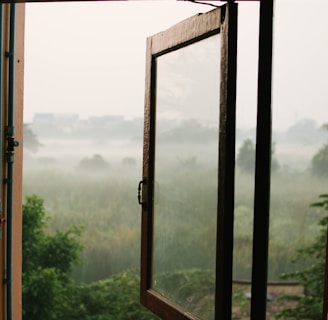Navigating the Challenges of Window Cleaning in Construction Zones
Navigate a variety of obstacles to ensure crystal-clear results
5/8/20242 min read


Cleaning windows in construction areas presents a unique set of challenges. From increased safety risks to stubborn debris, professional window cleaners must navigate a variety of obstacles to ensure crystal-clear results without compromising their safety or damaging the property. In this blog, we'll explore some of the major challenges and provide tips on how to manage window cleaning in construction zones effectively.
The Challenges
1. Safety Concerns:
Working in or around construction sites increases the risk of accidents due to loose debris, heavy machinery, and unstable structures. Ensuring the safety of window cleaners is paramount, requiring enhanced safety protocols and protective gear.
2. Increased Dirt and Debris:
Construction sites are notorious for dust, paint splatters, and other forms of stubborn debris that can adhere to windows. This not only makes the cleaning process more labor-intensive but also requires specialized cleaning techniques and products.
3. Unpredictable Environments:
The dynamic nature of construction sites means that window cleaners often face unexpected changes to their work environment. New hazards can emerge as the construction progresses, requiring constant vigilance and adaptability.
Best Practices for Window Cleaning in Construction Areas
1. Conduct Thorough Risk Assessments:
Before any cleaning begins, it’s crucial to perform detailed risk assessments of the construction site. This includes identifying potential hazards, planning safe access to windows, and coordinating with construction teams to ensure a safe environment.
2. Use the Right Equipment:
Invest in high-quality, durable cleaning equipment that can handle tough grime without damaging the windows. Safety gear, such as helmets, safety harnesses, and non-slip shoes, is also essential to protect cleaners from construction-specific risks.
3. Choose Appropriate Cleaning Agents:
For windows exposed to construction materials like paint and plaster, standard cleaning solutions might not be effective. Use specialized cleaning agents designed to tackle construction debris while being gentle on glass and frames.
4. Schedule Strategically:
Timing is everything in construction zones. Whenever possible, schedule cleaning during less active times on the site to minimize interference from ongoing construction activities and reduce the risk of re-soiling the windows.
5. Maintain Close Communication with Construction Teams:
Regular communication with construction managers and workers is vital. Being aware of the construction schedule and any planned activities that could affect window cleaning allows for better planning and response strategies.
6. Regular Cleaning:
Rather than waiting until the end of construction, regular cleaning throughout the construction process can prevent the build-up of heavy soiling and make the post-construction clean-up much easier.
Conclusion
Window cleaning in construction zones requires extra caution, specialized tools, and a proactive approach to safety and cleanliness. By understanding the challenges and implementing best practices, window cleaners can effectively tackle even the toughest jobs, ensuring that new buildings sparkle from day one.
For building managers and construction supervisors, partnering with experienced and knowledgeable window cleaning professionals is key to maintaining the aesthetic and integrity of your building’s exterior during the construction process.
---
This post not only outlines the difficulties associated with window cleaning in construction areas but also offers practical advice that can be implemented by professionals in the field.

